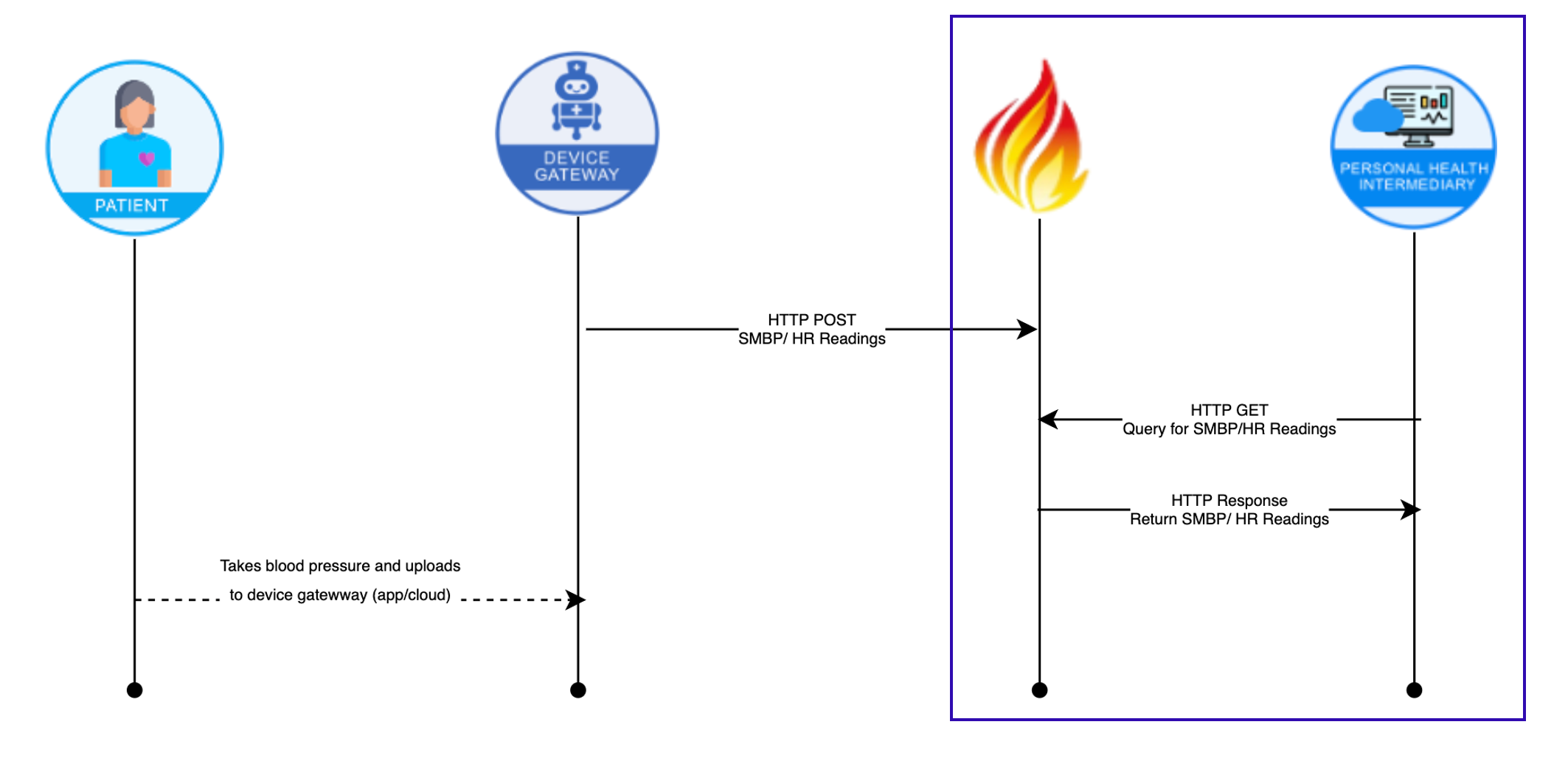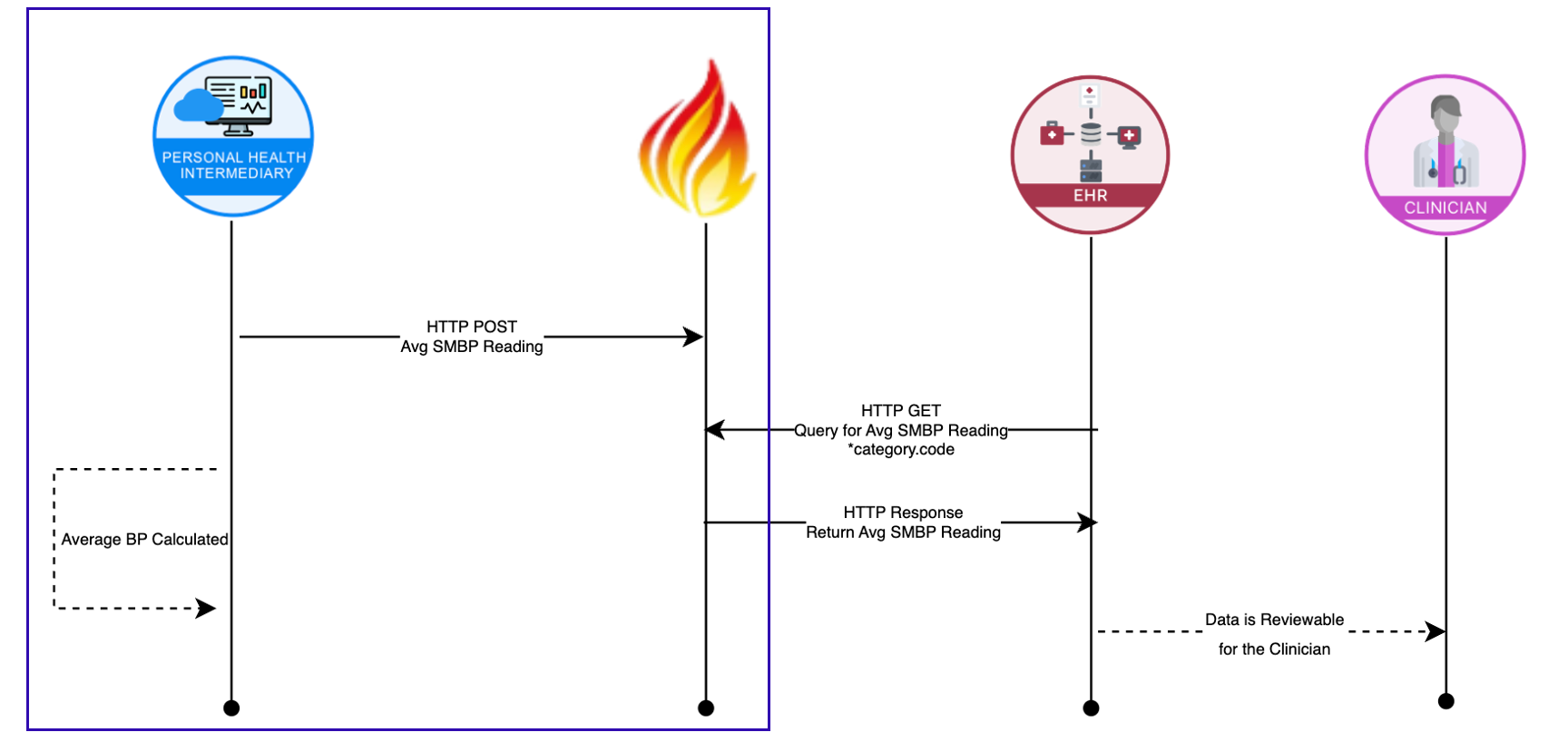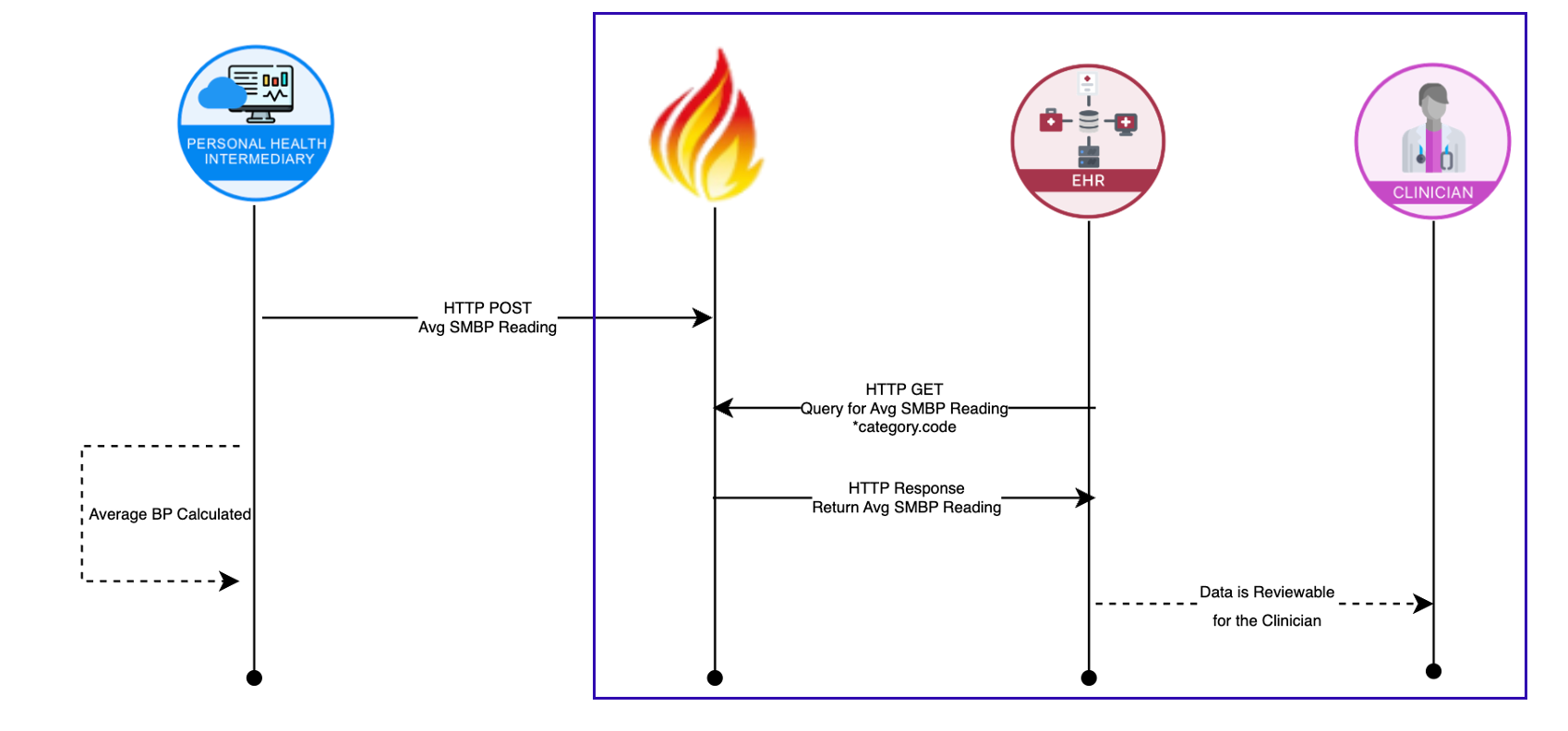This page is part of the CardX Hypertension Management IG (v1.0.0-ballot: STU1 Ballot 1) based on FHIR (HL7® FHIR® Standard) R4. The current version which supersedes this version is 1.0.0. For a full list of available versions, see the Directory of published versions
The following diagrams describe how to implement the SMBP profiles defined in this IG within the context of an SMBP monitoring program. The diagrams assume a patient is enrolled in an SMBP program, the patient uses a validated device, and the observations are taken at home by the patient.
A primary care provider enrolls a patient in a self-measured blood pressure monitoring program to manage the patient’s hypertension. The patient follows the provided instructions and takes their blood pressure as per protocol. The blood pressure data is uploaded via Bluetooth to the Device Gateway. The patient’s individual self-measured blood pressure readings and associated heart rate readings are pushed, via a FHIR API, to a receiving Personal Health Intermediary platform where the data is stored, aggregated, and managed. Once the information has been retrieved, the Personal Health Intermediary can store, share, reuse, and display the standardized information in their preferred view.


The Personal Health Intermediary calculates an average blood pressure reading based on the SMBP protocol timeframe. The patient’s average self-measured blood pressure and the individual self-measured blood pressures that comprise the average are pushed, via a FHIR API to an EHR’s FHIR-enabled patient portal. The EHR performs a GET request to retrieve the average blood pressure and associated observations. Once the information has been retrieved, the EHR can store, share, reuse, and display the standardized information in their preferred view.

